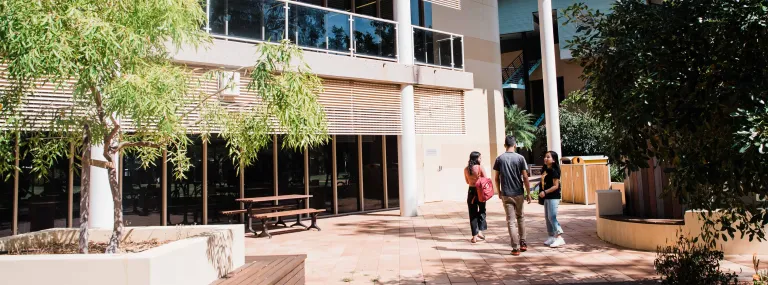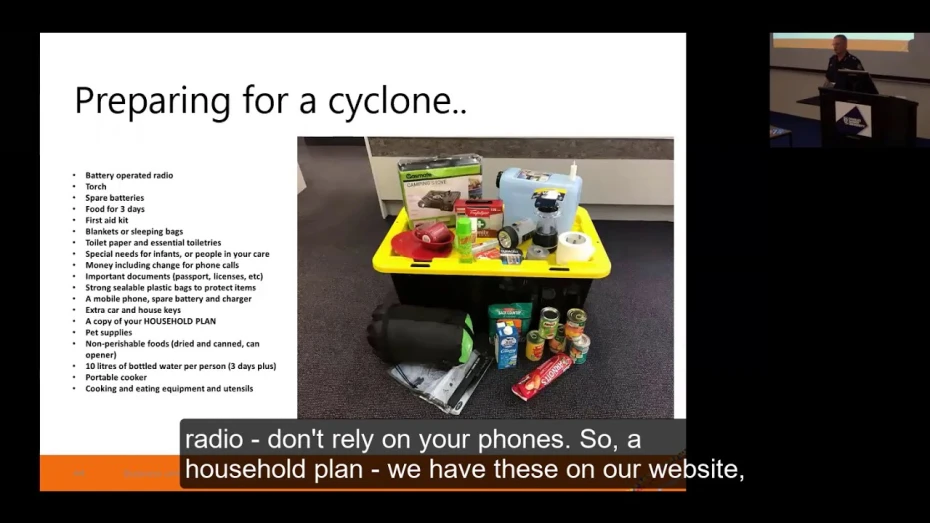
General emergency
In the event of an emergency such as illness/injury requiring first aid or medical assistance or a dangerous situation arises you must:
- contact 000 immediately, and
- contact University Security via the SafeZone App or 1800 646 501.
The Emergency response team will be sent to your location immediately.
Critical incident response
Escape. Hide. Tell.
If the University needs to go into a partial or full lockdown due to a critical incident, follow the Escape. Hide. Tell. principle.
- Download the SafeZone application to your mobile phone.
- Check in on SafeZone every time you are on campus.
- Ensure your contact details, especially your mobile phone number, are up to date (on SafeZone and eCentre).
- CDU students: Review the Escape. Hide. Tell. information on the Student Portal.
- CDU staff: Review the Escape. Hide. Tell. information on the Health and Safety site.
- Monitor and adhere to any warnings or alerts about emergency situations on any campus.
- Report any suspicious activity to Security.
There are a number of security arrangements in place across our campuses. Please familiarise yourself with these. If you are attending a different campus, take note that the phone numbers for Security may be different. If in doubt call 000.
Emergency evacuation
In an emergency evacuation all staff, students and visitors must follow the directions of their Emergency Control Organisation (ECO) – building wardens, floor wardens and first aid officers.
On hearing the alarm alert signal:
- Cease activities immediately.
- Check the immediate area for signs of fire/smoke.
- Prepare the area for evacuation and contact 000 and contact University Security via the SafeZone App or 1800 646 501.
- Commence evacuation via designated exits - do not use lifts.
- Evacuate to the designated external assembly area.
- Assist any person who requires assistance or inform the warden.
- Following the 'All clear' from the On-Scene Commander (OSC)/Local Incident Controller (LIC)/Emergency Services - you may re-enter the building.
Personal Emergency Evacuation Plan (PEEP)
Staff
Some staff may require assistance to evacuate in an emergency (visual, hearing, mobility impairment, claustrophobia or other - temporary or permanent). Ways of doing this are:
- Complete the staff PEEP (Personal Emergency Evacuation Plan).
- The plan outlines the methods of evacuation, assistance required and buddies who will assist.
- This will automatically be available to your floor and building wardens to assist emergency services in your safe evacuation.
WHS team can assist with this process.
Students
WHS team can assist with this process.
Tropical cyclone advice
The Bureau of Meteorology issues a tropical cyclone warning whenever a tropical cyclone is expected to cause winds in excess of 62 km/h (gale force) over land in Australia.
- Tropical cyclone advice may be a watch or a warning, depending on when and where the gales are expected to develop.
- Always monitor and obtain up to date information on any weather event through the Bureau of Meteorology. For information on emergencies tune to your ABC Local Radio channel.
When is tropical cyclone advice issued?
- A tropical cyclone watch is issued for coastal communities when the onset of gale-force winds is expected within 48 hours, but not within 24 hours.
- A tropical cyclone warning is issued for coastal communities when the onset of gale-force winds is expected within 24 hours, or are already occurring.
Communications protocol
Where a tropical cyclone watch or warning that affects a campus or centre occurs the University will communicate information in an:
- SMS and email to staff, and
- via the SafeZone app to students and contractors.
This communication will advise on actions related to campus closures and reopening.
In addition to these actions, the use of additional media, including radio, Facebook, Twitter, and others as appropriate to communicate information.
Further information
Earthquake advice
During an earthquake on campus:
- Drop to the ground and take,
- Cover by getting under a sturdy table or another piece of furniture*, and
- Hold on until the shaking stops.
*If there isn’t a table or desk near you, cover your face and head with your arms and crouch in an inside corner of the building.
- Stay away from glass, windows, outside doors and walls and anything that could fall, such as lighting fixtures or furniture.
- Stay inside until the shaking stops and it is safe to go outside. Do not exit a building during the shaking.
- Do not use the elevators.
- Be aware that the electricity may go out or the sprinkler systems or the fire alarms may turn on.
- Do not use a doorway as shelter.
- No running. Panic kills, you can’t outrun an earthquake, and you’re probably running past good cover.

